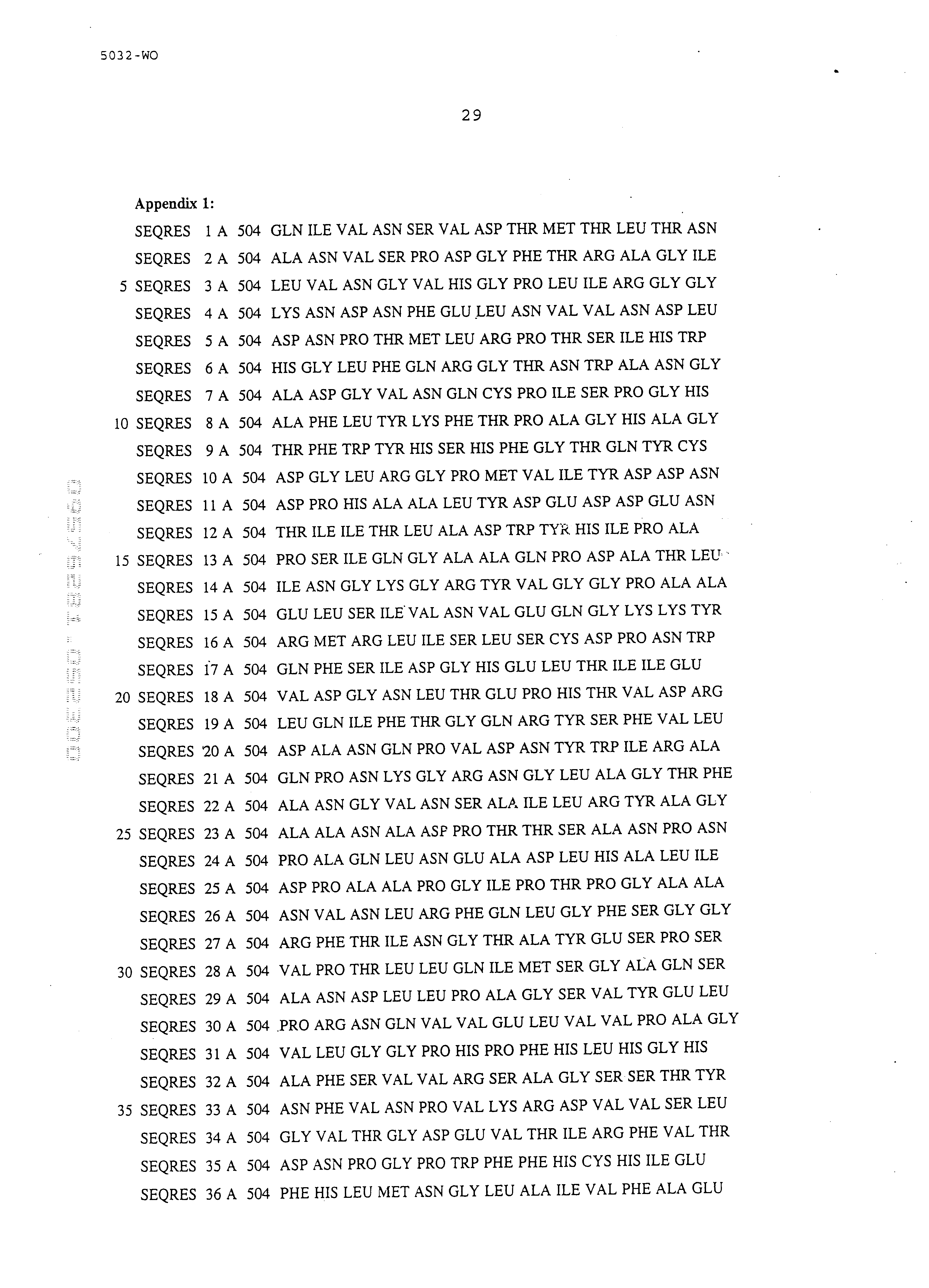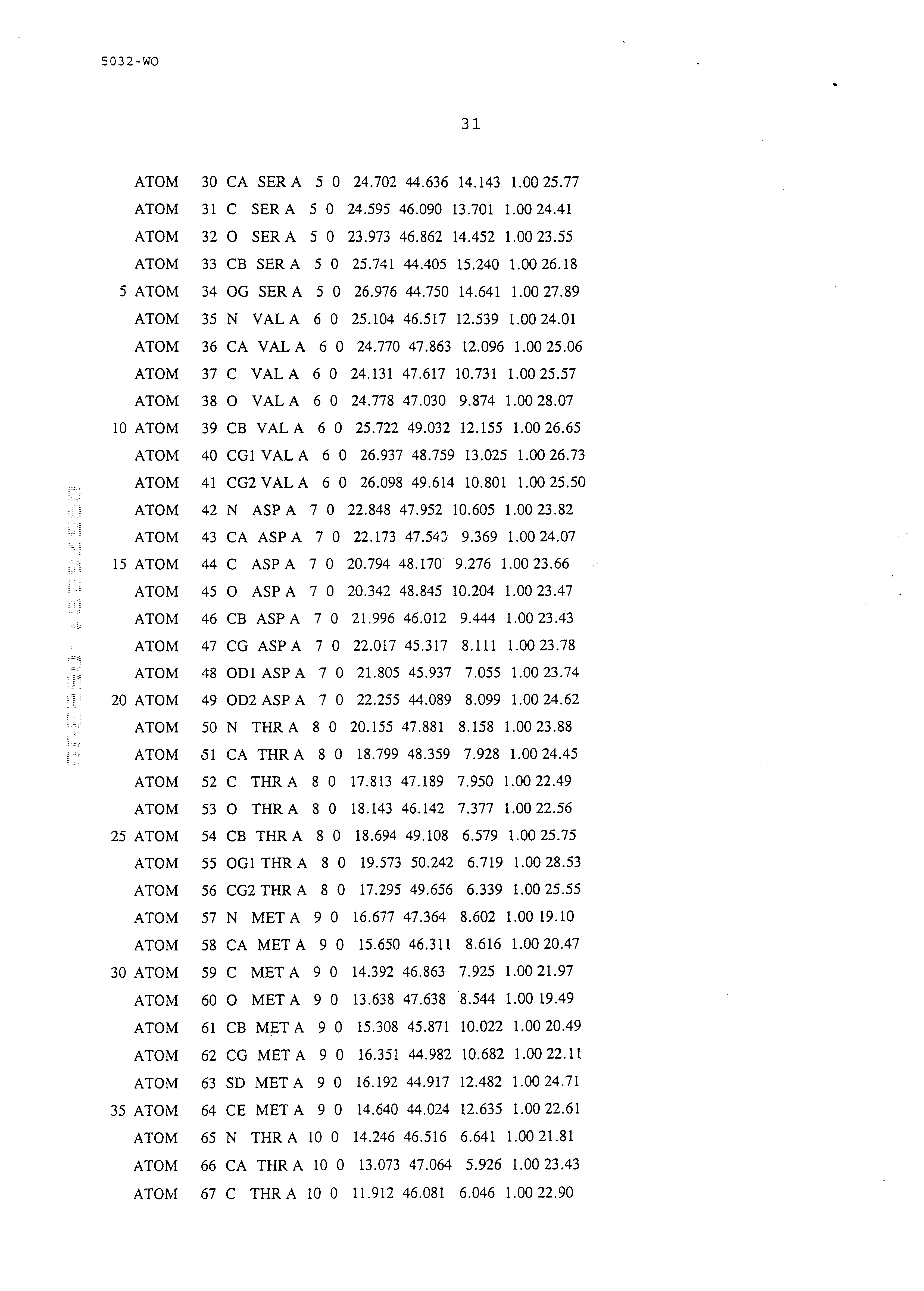Laccase mutants
a technology of laccase and mutants, applied in the field of laccase mutants, can solve the problems of laccase storage stability at temperatures above room temperature, and no three-dimensional structural information has been available for a laccase befor
- Summary
- Abstract
- Description
- Claims
- Application Information
AI Technical Summary
Benefits of technology
Problems solved by technology
Method used
Image
Examples
example 1
Storage Stability of the Wild Type Myceliophthora thermophila and the Polyporus pinsitus Laccases.
The storage stability of the Myceliophthora thermophila and the Polyporus pinsitus laccases was tested for 2 weeks at 40.degree. C. at pH S, 8 and 9.3, respectively.
The laccase (1 mg / ml) was dialyzed against 0.1 M sodium acetate, pH 5, or 0.1 M Tris-maleate, pH 8, or 0.1 M Tris-maleate, pH 9.3. Following dialysis the different preparations were poured into two sets of glass vials with screw caps: one for the liquid formulation and the other one for the lyophilized form. After two weeks of incubation the enzyme activity was measured as described above and the residual activity of the enzymes was calculated in percentage using a preparation of Myceliophthora thermophila and Polyporus pinsitus kept at 4.degree. C. as references. The results are given below in Table 1 and 2.
TABLE 1
example 2
Homology Building of the Polyporus pinsitus 3D-structure
Using sequence homology of Coprinus cinereus (CcL) to other sequences, e.g., Polyporus pinsitus, Coprinus-like 3 D-structures can be found.
In comparison with the Coprinus cinereus, used for elucidating the structure, Polyporus pinsitus differs in a number of residues. The model may be built using the HOMOLOGY program from BIOSYM. The program substitutes the amino acids in the Coprinus cinereus with amino acids from Polyporus pinsitus in the homologous positions defined in the program as structurally conserved regions (SCR). The residues in between are built using the LOOP option with GENERATE. Using these steps a crude model may be obtained which gives information of spatial interactions.
The structure can be refined using the method described in the HOMOLOGY package.
example 3
Storage Stability of Myceliophthora thermophila Variants
Laccase Activity:
In this Example the Myceliophthora thermophila laccase variants were measured using 0.4 mM HEPO in 0.1 M Tris-maleate, pH 7.5, 0.05% TWEEN-20 at 30.degree. C. The absorbance at 528 nm was followed for 200 s and the rate calculated from the linear part of the progress curve.
The storage stability of the Myceliophthora thermophila variants were tested for 4 weeks at 40.degree. C. at pH 5, 7, and 9.3, respectively. The laccase (1 mg / ml) was dialyzed against 0.1 M Tris-maleate, pH 5 or 0.1 M Tris-maleate, pH 7 or 0.1 M Tris-maleate, pH 9.3. Following dialysis the different preparations were poured into two set of glass vials with screw caps: one for the liquid formulation and the other set of glasses for lyophilization. Following two and four weeks of incubation the enzyme activity was measured as described above and the residual activity of the variants were calculated in percentage using a preparation kept at 4.de...
PUM
| Property | Measurement | Unit |
|---|---|---|
| temperature | aaaaa | aaaaa |
| distance | aaaaa | aaaaa |
| distance | aaaaa | aaaaa |
Abstract
Description
Claims
Application Information
 Login to View More
Login to View More - R&D
- Intellectual Property
- Life Sciences
- Materials
- Tech Scout
- Unparalleled Data Quality
- Higher Quality Content
- 60% Fewer Hallucinations
Browse by: Latest US Patents, China's latest patents, Technical Efficacy Thesaurus, Application Domain, Technology Topic, Popular Technical Reports.
© 2025 PatSnap. All rights reserved.Legal|Privacy policy|Modern Slavery Act Transparency Statement|Sitemap|About US| Contact US: help@patsnap.com



